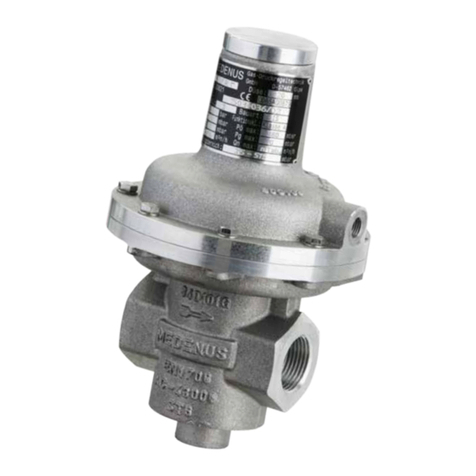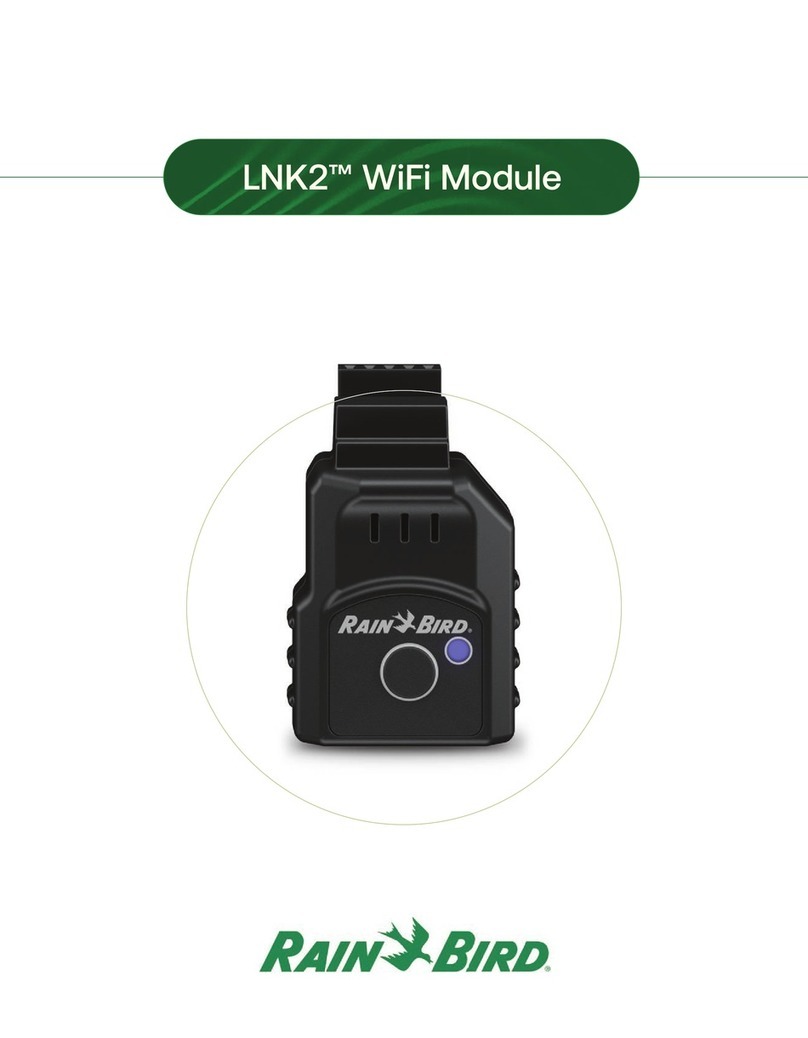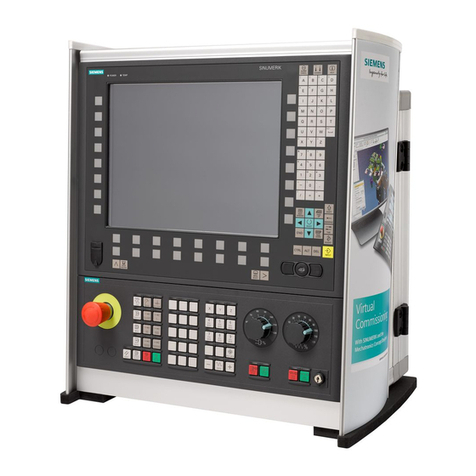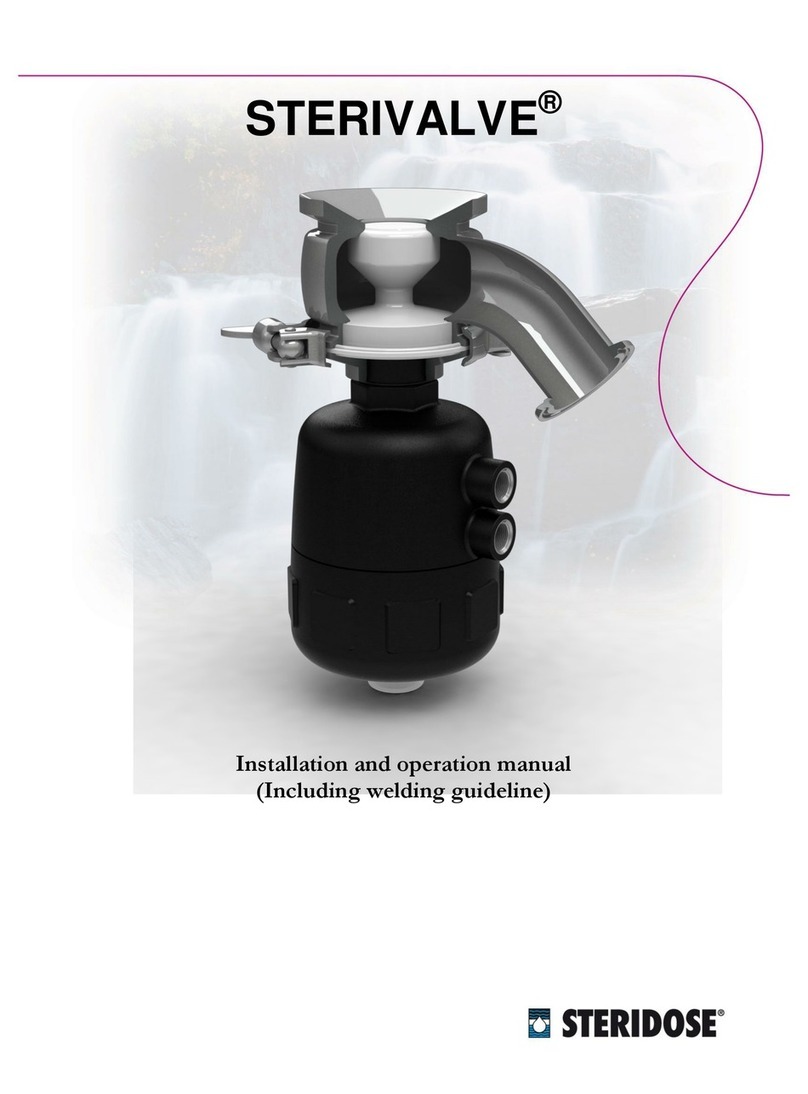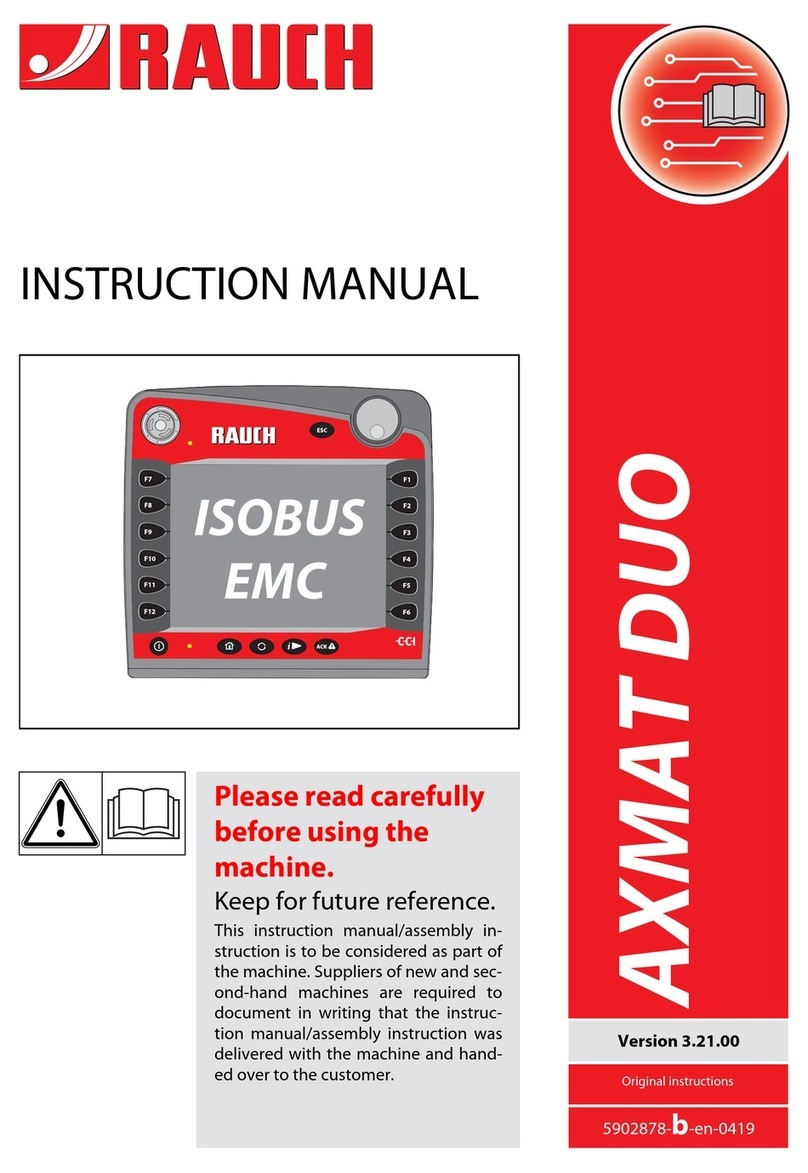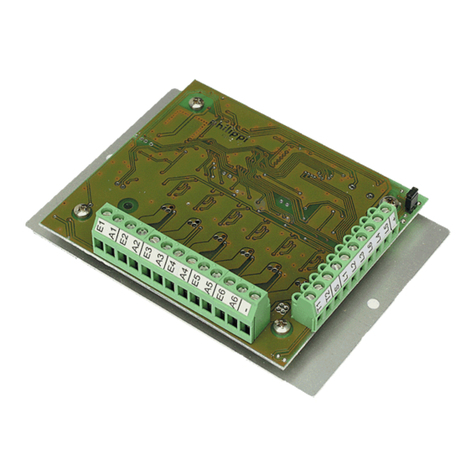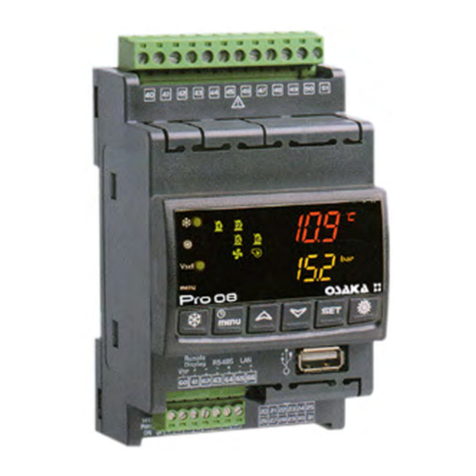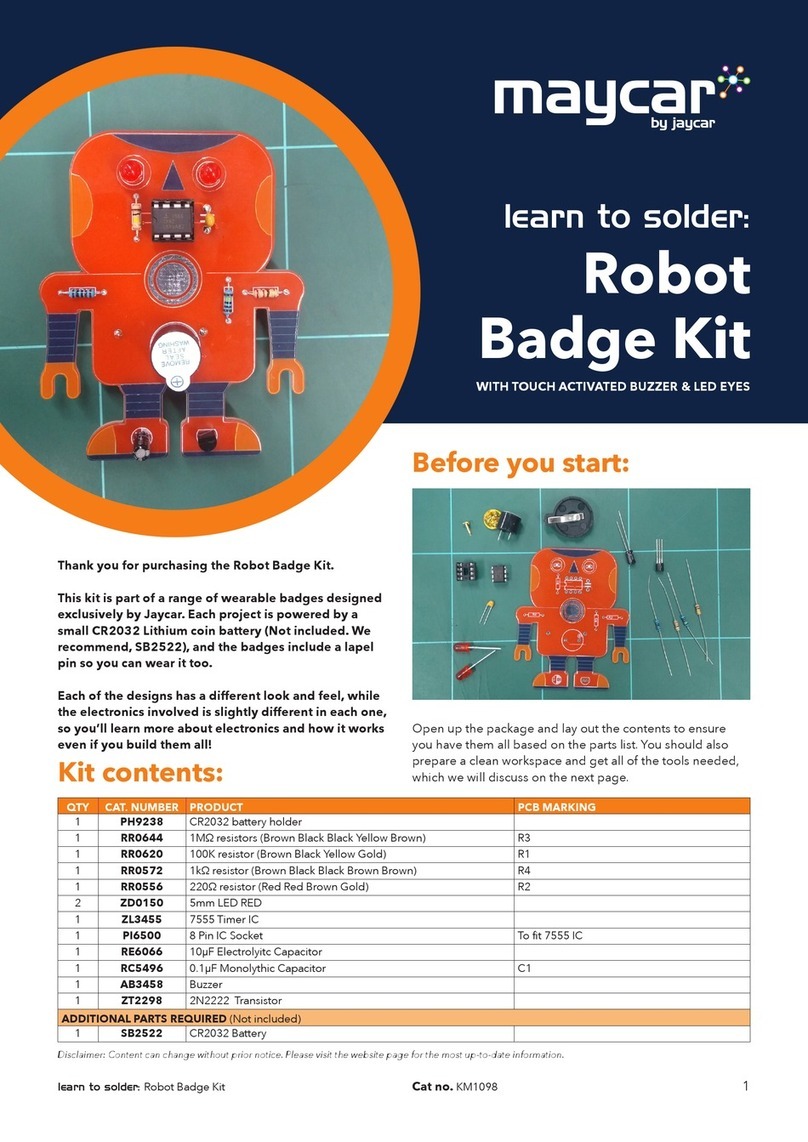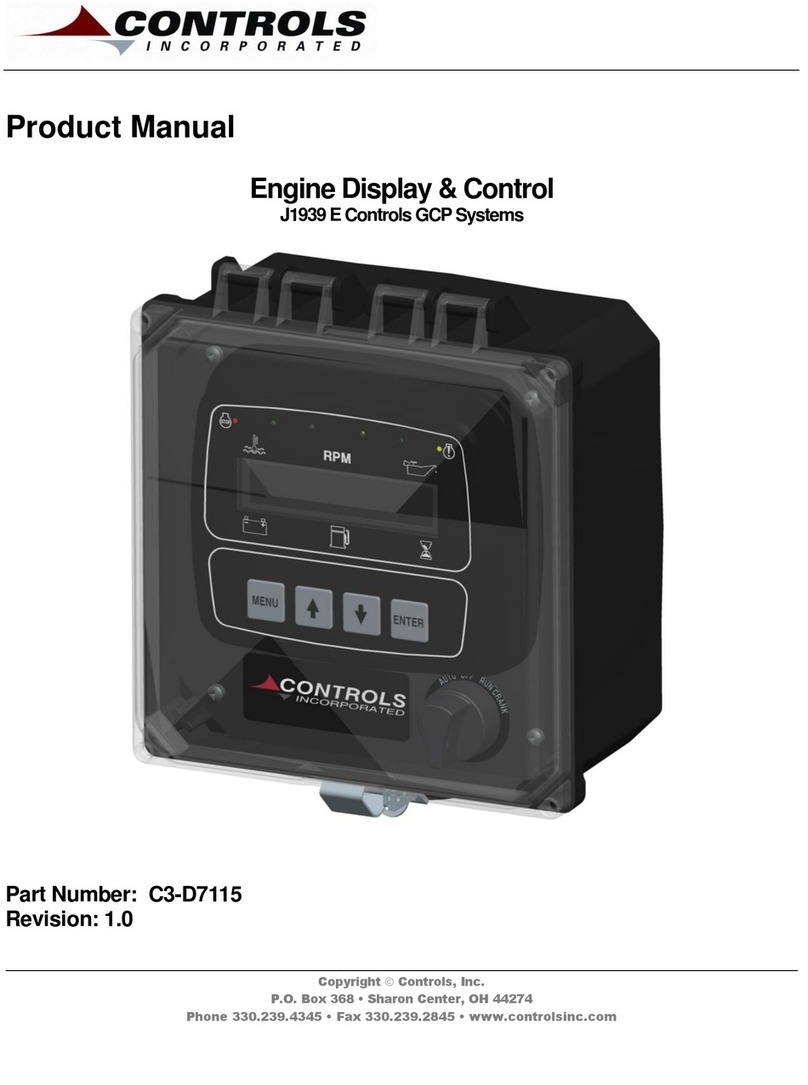MEDENUS S 100 Manual

© 05.2022
Safety Shut-Off Valve
S 100
Operating and Maintenance Instructions

Subject to technical modifications! Reprint prohibited!

Actuator housing
Valve plate
Valve seat
Diaphragm
Setting screw for lower
response pressure Setting screw for upper
response pressure
Design of the safety shut-off valve S 100
Housing cover
Diaphragm plate Impulseconnection
Breather connection
Pulling knob

Table of Contents
1 General Information 6
1.1 Warranty and Liability 6
1.2 Symbols, Notes 7
1.3 Terms, Abbreviations 7
2 Application, Characteristics 8
2.1 Application 8
2.2 Characteristics 8
2.3 Types of Models (Options) 8
3 Avoidance of Foreseeable Misuse 8
4 Safety Instructions 9
4.1 Hazards of Handling the Device 9
4.2 Personnel Requirements 9
4.3 Country-Specific Requirements 9
4.4 Handover of the Operating and Maintenance Instructions 9
4.5 Safety in Operation 10
4.6 What to Do in Case of Danger 10
5 Responsibility of the Operator 10
6 Transport, Storage and Packaging 11
6.1 Transport 11
6.2 Storage 11
6.3 Packaging 11
7 Mounting and Commissioning 12
7.1 Safety Instructions and Preparation 12
7.2 Mounting 12
7.3 Leakage Test (Test for External Leakage) 14
7.4 Initial Commissioning / Recommissioning 15
7.6 Decommissioning 18
8 Maintenance 19
8.1 Maintenance Plan 19
8.2 Maintenance Procedure 19
8.3 Table of Screw Tightening Torques MA20
8.4 Lubricants Table 20
Oxygen Model 20
For oxygen models, a suitable grease which is approved for the use 20
with oxygen must be used. 20
8.5 Screw Retention 20
9 Replacement and Disposal 20
10 Troubleshooting 21
11 Spare Parts 22
11.1 Spare Part Drawing of Safety Shut-Off Valve SSV 22
11.2 Parts for Maintenance Work 23
Valve Plate SSV / Diaphragm SSV 23
O-Rings and Sealing Rings 23
Notes 24

12 Accessories / Options 25
12.1 BV Breather Valve 25
12.2 Signal Transmitter/ Reed Contact 26
12.3 Inductive Signal Transmitter 29
12.4 SSV Remote Release 31
12.5 SSV Manual Release 33
13 Tools 34
13.1 Brace and Bit with 4-Jaw Chuck 34
13.2 SSV Tightening Tool 34
Declaration of Conformity 35
Notes 36

6
© 05.2022
1 General Information
The personnel entrusted with installation, operation or maintenance of the safety shut-off valve must have completely
read and understood beforehand the following documents:
• Safety Shut-Off Valve S 100 Product Information
The product information contains technical data, dimensions and a description of the design and the mode of
operation.
• Safety Shut-Off Valve S 100 Operating and Maintenance Instructions
This document allows safe and efficient handling of the device and contains information on assembly,
commissioning, maintenance, troubleshooting, and repair according to regulations.
It is an integral part of the scope of delivery of the device, must be kept in close proximity of the device and
must be readily accessible to personnel at any time.
The basic prerequisite for safe working is compliance with all safety instructions and instructions for action
given in this manual. Accordingly, the information and instructions must be observed when working on the
device or on the gas line. In addition, the local occupational safety regulations and general safety regulations
for the application range of the device shall apply.
The figures in these instructions are provided for basic understanding and may differ from the actual design.
The contents of these instructions are protected by copyright. They may be used as part of operating the
device. Any other use and/or reproduction is not permitted without prior authorization by MEDENUS Gas-
Druckregeltechnik GmbH.
1.1 Warranty and Liability
Claims under warranty or liability for personal injury and material damage are generally void
if one or several of the following conditions are not observed:
• Work on the device during the warranty period may only be performed in consultation with the manufacturer
• Designated use of the device in accordance with the established conditions of use
• Proper installation, commissioning, operation and maintenance of the device
• Operation of the device with properly installed and functioning safety devices only
• Operating and maintenance instructions of the device or of the system
• Compliance with the maintenance instructions
• Properly performed repairs
• Supply lines without defects
• The use of original MEDENUS©spare parts and lubricants listed in these instructions or
• Force majeure
It is generally prohibited
• To perform constructive modifications on the device
• To keep using the device despite the detection of a defect

7© 05.2022
1.2 Symbols, Notes
The instructions contain safety instructions marked with symbols to indicate possible consequences in case of non-
observance:
1.3 Terms, Abbreviations
Terms and abbreviations are explained below:
DANGER
Note
ATTENTION
This combination of symbol and signal word indicates a potentially hazardous
situation which, if not avoided, may result in minor or moderate injury, damage
to the device, the breakdown of the system, and material or environmental
damage.
This combination of symbol and signal word indicates an imminent hazardous
situation which, if not avoided, will result in death or serious injury.
This signal word highlights useful tips, recommendations, and information for
efficient and trouble-free operation.
ATC Acceptance test certificate
DN Nominal width
GPR Gas pressure regulator
MAScrew tightening torque
MOP Maximum operating pressure
in a system
pdOutlet pressure
pds Setpoint of the
outlet pressure
SSV Safety shut-off valve

8
© 05.2022
2 Application, Characteristics
2.1 Application
Safety shut-off valve (SSV), direct-acting (operating without auxiliary power), for systems acc. to
DVGW work sheets G 491 (A) and G 600 (A) (TRGI)
Can be used as an equipment component on gas consumption facilities as defined in Regulation (EU) 2016/426.
Can be used for the gases defined in DVGW work sheets G 260 / G 262 and neutral non-aggressive gases.
(other gases on request)
2.2 Characteristics
• Integralpressure-tightmodel(IS)
• Highflowratecapacity
• Open-airmodel
3 Avoidance of Foreseeable Misuse
2.3 Types of Models (Options)
• TheSSVmustnotbeusedtocontrolliquids.
• TheSSVmustnotbeusedintemperaturerangesbelow-20°Corabove60°C.
• TheSSVmustnotbeusedforpressurerangeshigherthanthepressure“PS“indicatedonthenameplate.
• TheSSVmayonlybeusedforthegasesspecifiedunderitem2.1Applicationintheseoperatinginstructions.
Other gases, such as oxygen or hydrogen, must be explicitly stated on the nameplate.
Please consult the manufacturer before use.
• TheSSVmustnotbeusedinhigh-temperatureareas(HTB)withoutanupstreamHTBfuse.
• WithBVbreathervalve
• WithRSSswitchingvalve(SSVdiaphragmruptureprotection)
• WithelectricpositionindicatorSSV“Closed”viainductiveproximityinitiatororviareedcontact
• WithSSVmanualrelease
• WithSSVelectromagneticremotereleasewhenpowerisappliedorincaseofpowerfailure
• Oxygenmodel

9© 05.2022
4 Safety Instructions
National accident prevention regulations and the system operator's safety regulations are not superseded by these
operating and maintenance instructions and must be taken into consideration with priority (in Germany, see, among
others, DVGW work sheets G 600, G 459/II, G 491 and G 495).
When performing work on the device, the current general and specific safety regulations must be observed.
The application limits of the device with respect to the medium, operating pressure and operating temperature can be
found on the nameplate affixed to the device or on the acceptance test certificate.
Using the device under different operating conditions must be agreed upon in consultation with
MEDENUS Gas-Druckregeltechnik GmbH.
The mechanical components of the device do not have any potential ignition sources of their own nor any hot surfaces
and are thus not covered by the scope of 2014/34/EU (ATEX). The electronic accessories used comply with the ATEX
requirements.
4.1 Hazards of Handling the Device
MEDENUS©devices conform with current standards and directives, the recognized technical rules
and the recognized safety rules.
However, improper use can result in hazards to the user or to third parties. This can also result in damage to the device
or to the system.
This is why the device may only be used:
• in accordance with its designated use
• in perfect condition
• while observing the notes given in these operating and maintenance instructions, and inspection and
maintenance regulations, which apply to the functioning and safety of the overall system.
Malfunctions or faults must be eliminated immediately.
4.2 Personnel Requirements
The device may only be mounted by qualified personnel.
Only authorized personnel with the required qualification is allowed to perform settings or repairs on the device.
4.3 Country-Specific Requirements
The rules and regulations applicable at the place of use with respect to
• gas lines, installation of the gas system,
• gas supply,
• work on the gas system,
• accident prevention.
4.4 Handover of the Operating and Maintenance Instructions
The supplier of the system shall hand over these operating and maintenance instructions to the operator of the system
no later than during commissioning and training
of the operating personnel with the reminder to carefully store these instructions.

10
© 05.2022
4.5 Safety in Operation
The device may only be used when all protective devices on the device or in the system are fully functional.
The device must be inspected by a representative of the manufacturer or by a qualified person for externally visible
damage and for proper functioning at least once a year.
A more frequent inspection may become necessary, depending on the system conditions.
4.6 What to Do in Case of Danger
Information on what is to be done in case of danger and in case of accidents can be found in the respective operator's or
specialist companies' work instructions.
5 Responsibility of the Operator
Operator An operator is a person who operates the device himself/herself for commercial or economic purposes
or leaves it to a third party for use/application and is legally responsible for the safety of the user, the
personnel or third parties during operation.
The device is used in the commercial sector. The operator of the device is therefore subject to the legal
obligations for occupational safety. In addition to the safety instructions contained in these instructions,
the established maintenance intervals must be observed, taking into account the respective national
standard (alarm and hazard prevention plan).
In particular, the following applies:
• The operator is obliged to perform work on MEDENUS©devices during the warranty period only
after consultation with the manufacturer. Otherwise the claims under warranty will become
void.
• The operator must obtain information on the current occupational safety regulations and
determine additional hazards resulting from the special work conditions at the place of use of
the device in a risk assessment. The owner must implement the results in the form of operating
instructions for the device.
• During the entire time of use of the device, the operator must check whether the operating
instructions issued by him/her conform to the current state of the regulations and, if necessary,
adapt them.
• The operator must clearly regulate and define the responsibilities for installation, operation,
troubleshooting, maintenance and cleaning.
• The operator must ensure that all persons handling the device have read and understood these
instructions. In addition, the operator must train the personnel at regular intervals and inform
them about the hazards.
• The operator must make available to the personnel the required protective equipment and
oblige them to wear the required protective equipment.
• Moreover, the operator is responsible for the device always being in technically perfect condition.
Therefore, the following applies:
• The operator must make sure that the maintenance intervals described in these instructions
are observed.
• The operator must have all safety devices checked regularly for functionality and completeness.
Operator
duties

11 © 05.2022
6 Transport, Storage and Packaging
6.1 Transport
The device is delivered with flange protection caps. They must be removed prior to installation.
Make sure that the device is transported horizontally using suitable lifting gear. The device must be
handled carefully and secured against impacts and knocks.
In case of transport damage, we will require the following information from the nameplate affixed to
the device:
• Device type
• Device model
• Year of construction/fabrication number
Note
6.2 Storage
Equipment and spare parts must be stored under the following conditions:
• Do not store outdoors.
• Store in a dry and dust-free location.
• Store on a flat surface.
• Do not expose to aggressive media.
• Do not expose to ozone or ionizing radiation.
• Do not store adjacent to direct heat sources.
• Avoid mechanical vibrations.
• Storagetemperature:0to25°C.
• Relative air humidity: < 55 %.
Spare parts:
• Components susceptible to corrosion must be provided with a suitable preservative.
• Do not store O-rings and seals for more than 5 years even if stored properly.
• Spare parts must be stored in their original packaging until use.
Storage period for devices:
• Storage of the device for up to one year:
Store the device in its original packaging and its original condition at the time of supply. All protective caps of
the device must remain mounted.
• Storage of the device for more than 1 year (e.g. as a spare device):
Store the device in its original packaging and its original condition as delivered and check it for damage once
a year. Check the housing surface for dirt, damage and corrosion. If necessary, clean all external parts. After
5 years, all O-rings and seals must be replaced.
6.3 Packaging
• The individual packaged items have been packaged in view of the transport conditions to be expected.
• The symbols on the packaging must be observed during transport and storage.
• Only environmentally friendly materials have been used for packaging.
• The packaging is designed for protecting the individual components from transport damage, corrosion and
other damage until mounting. This is why the packaging must not be destroyed and only removed just prior to
mounting.

12
© 05.2022
7 Mounting and Commissioning
7.1 Safety Instructions and Preparation
Prior to starting work on pressurized components:
• Close all connections to the gas line.
• Depressurize all pressurized components. Also discharge residual energies.
• Defective components charged with pressure in operation must be replaced immediately by
an appropriate expert.
Prior to starting work, ensure sufficient clearance for mounting.
Before installing the device, check whether the performance data (nameplate) and the scope of
delivery coincide with the order or the system data, i.e., make sure that the provided devices are
suitable for their intended purpose. In particular, the inlet pressure of the system must be lower than
the maximum allowable pressure of the device.
Direct contact of gas valves and fittings, i.e., the control system, with hardening masonry, concrete
walls or floors is not permitted. Provide suitable supports, working materials and protective
equipment.
Take into account the minimum clearances for maintenance as stated in the product information.
Before installing the device in the pipeline, check whether a shut-off device that interrupts the gas
flow supply to the device has been mounted upstream and downstream of the device to be installed.
Prior to commissioning, make sure that all installation work has been carried out and completed
in accordance with the data and information given in these instructions and that no unauthorized
persons stay in the danger zone.
DANGER
Note
Note
DANGER
Note
Note
Note
Gas pressure regulators Flange tightening torques
Screw size Screw tightening
torque MA
Screw size Screw tightening
torque MA
M6 8Nm M12 60Nm
M8 18Nm M16 120Nm
M10 36Nm M20 190Nm
M12 62Nm
Tightening torques MA*)
*) For the assembly of the flange connections, the maximum torques specified by the flange and gasket manufacturers
must be observed. The values indicated here should be considered as approximate values.
7.2 Mounting
• Remove the packaging, flange protection caps and shipping braces.
• Check the device for wear and damage.
• Make sure that the device is installed free of stress. Make sure to observe the direction of
flow
i.e., the arrow on the housing must point in the direction of flow.
• All breather lines (items 7.04 / 7.07) must be vented to the outside atmosphere.
• The breather line (item 7.04) may not be required if breather valves are used.
• The measuring lines (items 7.05 / 7.08) must be connected in a pipeline section with a
steady flow. There must be no installations that cause flow interference such as shutters,
expansions, manifolds, junctions, isolation valves etc. directly upstream and downstream
of the measurement point.

13 © 05.2022
7.01
7.02
7.03
7.28
7.07
7.08
7.04
7.05
7.10 7.12
7.11
7.09
7.13
7.26
7.27
7.06
P1
P2
min. 5x DN
Inlet
Outlet
Range for
measuring points*
(approx. 3x DN P2)
Connection
• The maximum flow rate at the measuring point must not exceed 25 m/s, depending on the system conditions.
• In certain system circuits, such as gas control systems for gas motors and in gas burners, higher flow rates
than 25 m/s are also possible. Please contact us.
• The measuring line must be connected to the pipeline separately, laterally or at the top for each device (1 gas
pressure regulator (item 7.03); 1 SSV (item 7.06)).
• The SSV measuring line (item 7.08) must always be connected upstream of the first shut-off valve (item 7.13)
on the outlet side in such a way
that it cannot be shut off.
X
Y
Z
I
A
Bore Ø [mm]
Nominal width Version Impuls-
leitung /
impulse line (I)
Atmungs-
leitung /
breathing line (A)
Impuls-
leitung /
impulse line (I)
Atmungs-
leitung /
breathing line (A)
DN 025
DN 040
MD 2 2
Connection* for: tube
12 x 1.5 (thread G 1/4)
MD-R 2 3
HD 2 2
DN 050
MD 2 2
MD-R 2 3
HD 2 2
DN 065
MD 3.5 2
MD-R 3.5 3
HD 3.5 2
DN 080
DN 100
DN 125
MD 2 2
MD-R 2 3
HD 2 2
DN 150
MD 4 2
Connection* for: tube
12 x 1.5 (thread G 3/8)
MD-R 4 2
HD 4 2
DN 200
MD 4 2
MD-R 4 2
HD 4 2

14
© 05.2022
U
S
G
a
s
-
D
r
u
c
k
r
e
g
e
l
g
e
r
ä
t
D
E
N
U
S
G
a
s
-
D
r
u
c
k
r
e
g
e
l
g
e
r
ä
t
7.10
7.09
7.10
7.09
For Germany:
According to DVGW work sheet G 491, the fully assembled system must be subjected to a leakage test with air or an inert
gas at the installation site, using 1.1 times the maximum operating pressure of the system (MOP).
An exception is the room between the actuator and the first shut-off valve on the outlet side. This room must be checked
using the test pressure corresponding to the maximum permissible pressure in the system in case of a malfunction (1.1
MOPd). In this test, all detachable connections must be checked using a foaming agent.
For other countries:
The relevant national and international standards shall apply.
Procedure
• Close the ball valve upstream of the valves and fittings (item 7.01).
• Close the downstream shut-off devices (item 7.13) (ball valve,
solenoid or pneumatic valve).
• Depressurize the system (item 7.11).
• If there is a SRV (safety relief valve) in the controlled section and
the test pressure is higher than the relief pressure of the SRV (item
7.09), the line upstream of the SRV (item 7.10) must be closed.
• Connect the testing device to measuring points upstream and
downstream of the gas pressure regulator (items 7.26 / 7.27).
• Always increase the test pressure slowly and steadily.
7.3 Leakage Test (Test for External Leakage)
The devices are subjected to a strength and leakage test ex works at MEDENUS Gas-Druckregeltechnik GmbH.
The leakage test in the fully assembled system must be performed prior to commissioning and following maintenance
work.
For the external leakage test in the fully assembled system, the following applies
While doing so, you must ensure:
Pressure in outlet chamber (item 7.12) ≤pressure in inlet chamber (item
7.02)
Pressure build-up always from the inlet side (inlet chamber)
Pressure reduction always from the outlet side (outlet chamber)
• After leakage test:
Open the ball valve in the SRV line (item 7.10) again.
Note
ATTENTION

15 © 05.2022
7.15
7.14
7.17
7.16
7.19
7.18
7.14
7.4 Initial Commissioning / Recommissioning
Initial commissioning of the system components shall be carried out by the operator. For commissioning, please refer to
thedocumentslistedunderitem1“GeneralInformation”andthesystemoperator'sworkinstruction.
The devices delivered by MEDENUS Gas-Druckregeltechnik GmbH are factory-set to the operating data specified by the
customer. This data is listed on the Acceptance Test Certificate (ATC)* and the type plate.
Prior to commissioning the system, a functional test must be performed on the gas pressure regulator
(GPR) and the safety shut-off valves.
Procedure
• Close the ball valve upstream of the valves and fittings (item 7.01).
• Close the downstream shut-off devices (item 7.13) (ball valve, solenoid or pneumatic valve).
• Depressurize the system (item 7.11).
• Close the venting ball valve (item 7.11).
• Slowly open ball valve upstream of the valves and fittings (item 7.01).
If the inlet shut-off device is equipped with a bypass, the latter must be slowly opened for pressure
compensation as step 1. This is followed by slowly opening the inlet shut-off valve which will close the
bypass. The same is true of the outlet shut-off valve.
• Check the inner leakage of the SSV (item 7.06) by reading the pressure gauge
installed downstream of the GPR (item 7.12).
• Unscrew the sealing cap (item 7.15) of the safety shut-off valve (SSV).
• Perform pressure compensation by opening the ball valve (item 7.28) and
engage the SSV by pulling the pull knob (item 7.14).
• The ball valve (item 7.28) automatically closes after being released.
• A closing pressure corresponding to the set value is established on the GPR.
An SSV with underpressure shut-off can only be engaged if the
pressure at the measuring point exceeds the set value by at least the
re-engagement differential.
• Testing the response pressure of the SSV by slowly increasing or decreasing
the output pressure to response pressure.
• It may be necessary to correct the setpoint values of the response pressures.
This is done by turning the SSV setpoint setting screws (items 7.17 / 7.19) to
the right (pressure increase) or left (pressure decrease) in order to increase/
decrease the setpoint value.
The inner setting screw (item 7.17) sets the underpressure shut-off
level (lower trigger level) and the outer setting screw (item 7.19) sets
the upper trigger level.
• Perform pressure compensation again by opening the ball valve (item 7.28)
and engage the SSV by pulling the pull knob (item 7.14).
• Close the ball valve (item 7.28) again.
*) Acceptance Test Certificate (ATC) available optionally
Note
Note
Note
Note

16
© 05.2022
Changing the control range
Switching to the control range of a different setpoint spring can be done for the SSV
while the device is pressurized.
• Remove the sealing cap (item 7.15) and screw off the pull knob (item 7.14) for
changing the spring of the underpressure shut-off device (item 7.16).
• Screw off the corresponding setting screw (items 7.17 / 7.19) for the upper or
lower trigger level.
• Pull out the spring (item 7.16 / 7.18) and replace it with one that fits.
• Screw in the setting screw (item 7.17 / 7.19) again and fasten the pull knob
(item 7.14) on the spindle again.
• Set the desired setpoint and screw on the sealing cap (item 7.15).
The SSV closes if the overpressure setpoint spring (upper trigger level) is removed from
a pressurized system. Note
Note

17 © 05.2022
7.5 SSV Setpoint Spring Table - Control Device
*) Standard spring
**) If the control device is set up for simultaneous monitoring of upper and lower response pressures, the difference
between the setpoints for the upper and lower response pressures (pdso and pdsu) should be at least 10% greater than the
total of values given for Δpwo and Δpwu.
S100: DN 25 - 125
small ball lock
MD MD-R HD
to Wds o 300 mbar to Wds o 3500 mbar to Wds o 8000 mbar
Spring data Lower response
pressure
Upper response
pressure
Lower response
pressure
Upper response
pressure
Lower response
pressure
Upper response
pressure
Spring
no.
Color
[RAL]
Wds u
[mbar]
Δpwu
[mbar]
Wds o
[mbar]
Δpwo
[mbar]
Wds u
[mbar]
Δpwu
[mbar]
Wds o
[mbar]
Δpwo
[mbar]
Wds u
[mbar]
Δpwu
[mbar]
Wds o
[mbar]
Δpwo
[mbar]
FE 900 1028 1 - 8 20 35 - 50 50 120 - 180 500
FE 901 VA 2002 6 - 17 20 50 - 80* 50 150 - 280* 500
FE 902 VA 6010 12 - 24* 20 70 - 105 50 280 - 480 500
FE 903 5015 22 - 40 20 100 - 140 50 330 - 500 500
FE 904 VA 9005 30 - 50 20 110 - 160 50 400 - 550 500
FE 905 VA 9010 45 - 70 20 150 - 205 50 550 - 800 500
FE 906 4002 65 - 100 20 200 - 300 50 800 - 1200 500
FD 910 1028 20 - 40 20 90 - 125 50
FD 911 2002 35 - 70 20 120 - 210 50
FD 912 6010 65 - 110 20 200 - 330 50
FD 913 5015 100 - 160 20 285 - 460 50
FD 914 9005 150 - 235 20 450 - 680 50
FD 915 9010 225 - 300 20 640 - 1040 50 2200 - 4000 300
FD 916 3020 1030 - 1480 50 3400 - 4750 300
FD 917 5010 1450 - 2200 50 4700 - 7400 300
FD 918 9006 1900 - 3500 50 7200 - 8000 300
FD 919 4002

18
© 05.2022
7.6 Decommissioning
Fordecommissioning,pleaserefertothedocumentslistedunderitem1“GeneralInformation”andthesystemoperator's
work instruction.
Procedure
• Slowly close the outlet shut-off valve (item 7.13)
• Close the ball valve upstream of the valves and fittings (item 7.01).
• Depressurize the system (item 7.11).
• Close the venting ball valve (item 7.11).
*) if possible not greater than 500 mbar
**) If the control device is set up for simultaneous monitoring of upper and lower response pressures, the difference
between the setpoints for the upper and lower response pressures (pdso and pdsu) should be at least 10% greater than the
total of values given for Δpwo and Δpwu.
***) The upper response pressure is rounded up to full tens, for example 251 mbar-> 260 mbar
Determining the upper response pressure
Outlet pressure Pd
(mbar)
Upper response pressure Wdso
***
≤200 Pd+100 mbar
>200 - ≤800 Pdx 1.5
>800 - ≤1600 Pdx 1.3
>1600 Pd+500 mbar
S100: DN 150 - 200
large ball lock
MD MD-R HD
to Wds o 300 mbar to Wds o 3500 mbar to Wds o 8000 mbar
Spring data Lower response
pressure
Upper response
pressure
Lower response
pressure
Upper response
pressure
Lower response
pressure
Upper response
pressure
Spring
no.
Color
[RAL]
Wds u
[mbar]
Δpwu
[mbar]
Wds o
[mbar]
Δpwo
[mbar]
Wds u
[mbar]
Δpwu
[mbar]
Wds o
[mbar]
Δpwo
[mbar]
Wds u
[mbar]
Δpwu
[mbar]
Wds o
[mbar]
Δpwo
[mbar]
FM 400 1028 10 - 40* 20 20 - 180* 50 0 - 250 500
FM 402 6010 35 - 115 20 155 - 380 50 150 - 1000* 500
FM 404 9005 60 - 245 20 200 - 950 50 650 - 2050 500
FL 412 6010 40 - 180 20 145 - 670 50 380 - 1400 300
FL 413 5015 70 - 300 20 270 - 1230 50 800 - 2800 300
FL 415 9010 1200 - 3500 50 3200 - 5500 300
FL 417 4010 4500 - 8000 300

19 © 05.2022
8.2 Maintenance Procedure
The maintenance procedure is described in detail step-by-step in our video tutorial and our pictorial descriptions.
Instructions for our products can be found in the download area of our website. Should you have any problems, please
feel free to contact us directly.
If components have been removed, make sure they are mounted correctly, reinstall all fastening
elements and observe the screw tightening torques.
Prior to recommissioning, observe the following:
• Make sure that all maintenance work has been carried out and completed in accordance
with the data and information given in these instructions.
• Make sure that no unauthorized persons stay in the danger zone.
• Make sure that all covers and safety devices have been installed and are working properly.
For recommissioning, please refer to the relevant manufacturer's documentation of the
gas pressure regulator installed in the system or chapter 1 and 5.4 as well as the work instructions of the system
operator, and the other safety regulations for the system in which the regulator is installed.
To guarantee smooth operation, we recommend always keeping a maintenance set in reserve.
8 Maintenance
8.1 Maintenance Plan
The following sections describe the maintenance work required for optimal and trouble-free operation of the device.
If increased wear is detected during regular inspections, the required maintenance intervals must be shortened in
accordance with the actual wear.
For any questions on maintenance work and intervals, please contact the manufacturer.
The intervals for monitoring and maintenance work are strongly dependent on the operating situation and the condition
of the gas. This is why no fixed intervals can be given. For Germany, it is recommended that the maintenance periods as
specified in DVGW work sheet G 495 are observed initially. For each system, this must be followed by determining the
maintenance interval independently on a medium-term basis.
During maintenance work, the components must be cleaned and subjected to a thorough visual inspection. This is also
necessary if irregularities in the operating behavior have been detected during operation or during functional tests. The
check must cover the diaphragms and sealings in particular.
Damaged parts and O-rings dismounted during dismantling must be replaced with new ones.
The item numbers mentioned in chapter 11.2 (Maintenance Procedure) correspond to those listed in the
spare parts drawings and spare parts lists.
It is recommended to stock the parts listed in chapter 11.2 on page 23 for maintenance work.
Interval Maintenance work Personnel
According to
the data given in
DVGW work sheet
G 495
or when required
Replacing O-rings
Qualified person
Replacing diaphragms
Replacing the valve plate
Replacing sealing rings for the connections of the breather lines and
measuring lines
ATTENTION
DANGER
Note

20
© 05.2022
8.3 Table of Screw Tightening Torques MA
Item no.
S100 / 025
S100 / 040
S100 / 065
S100 / 050
S100 / 080
S100 / 100
S100 / 125
S100 / 150
S100 / 200
53 M8/18Nm M10/36Nm M12/62Nm
54 M6/8Nm M6/8Nm M8/18Nm
56 M8/18Nm M10/36Nm M12/62Nm
8.4 Lubricants Table
Components (apply a thin layer) Lubricants
All O-rings Syntheso Proba 270
All fastening and locking screws Anti Seize AS 450
Balls Unisilkon TK 44N2
Oxygen Model
For oxygen models, a suitable grease which is approved for the use
with oxygen must be used.
8.5 Screw Retention
Components (apply a thin layer) Adhesive and sealing agent
Stud bolts Loctite-648
9 Replacement and Disposal
After the device has reached the end of its useful life, it must be dismounted and disposed of in an
environmentally compatible manner.
During dismounting, components that may present a risk of injury by contamination,
depending on the medium, are removed. Depending on the processed medium, the
components must be properly decontaminated. Diffusible components (diaphragm, O-ring, etc.) may have to be taken to
a special disposal unit, depending on the medium used.
If no return or disposal agreement
has been signed, dismantled components should be recycled:
• Metals should be scrapped
• The remaining components should be disposed of after sorting according to material.
For technical information, please contact our customer service:
MEDENUS Gas-Druckregeltechnik GmbH
Im Langen Feld 3
D-57462 Olpe
Phone +49 (0) 2761 / 82788-0
Fax +49 (0) 2761 / 82788-9
E-mail [email protected]
Internet www.medenus.de
ATTENTION
56
53
54
In addition, we are always interested in information, suggestions and experience resulting from the
application and which can be valuable for improving our products. Note
This manual suits for next models
1
Table of contents
Other MEDENUS Control Unit manuals
Popular Control Unit manuals by other brands

Festo
Festo Smart cubic CPVSC1-VI manual

Hydra-Stop
Hydra-Stop Insta-Valve 250 Patriot installation instructions
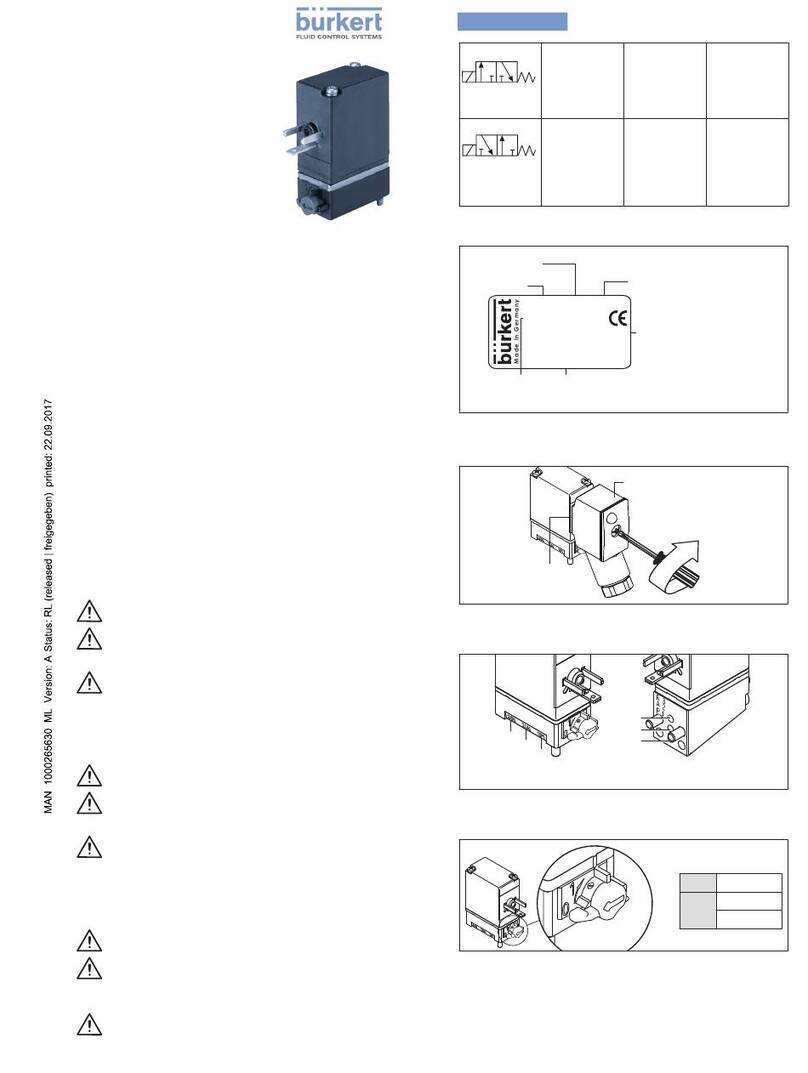
Burkert
Burkert 6106 operating instructions
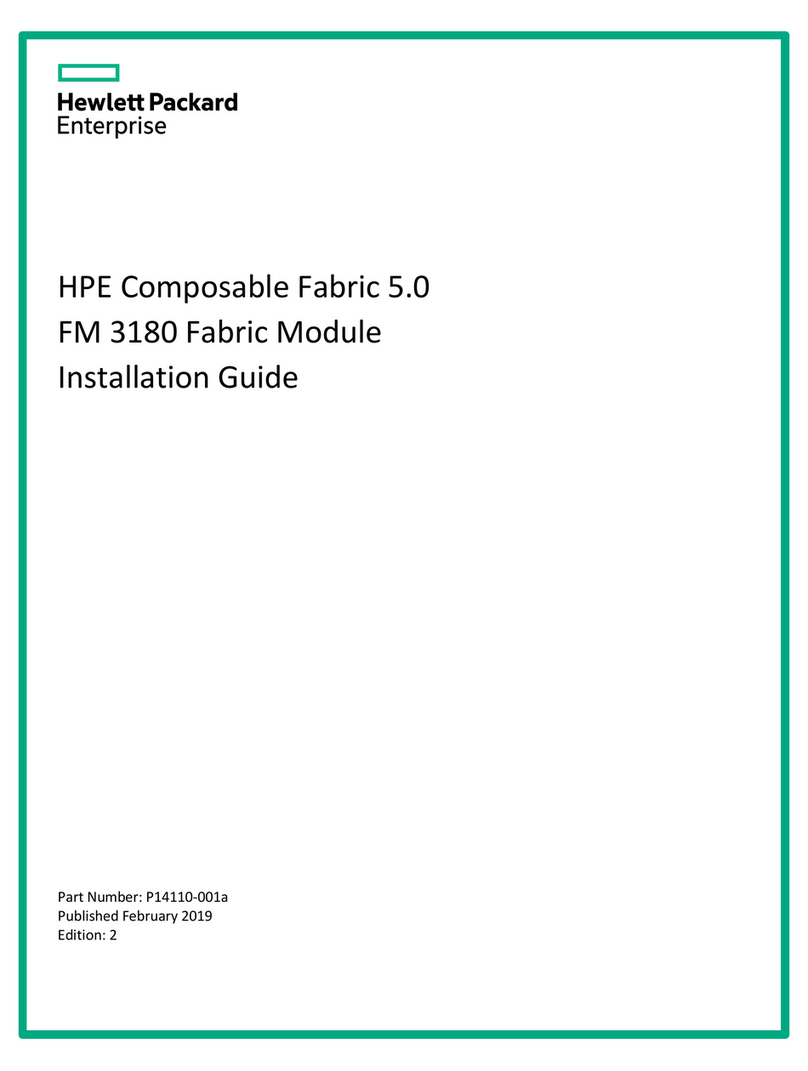
Hewlett Packard Enterprise
Hewlett Packard Enterprise FM 3180 installation guide
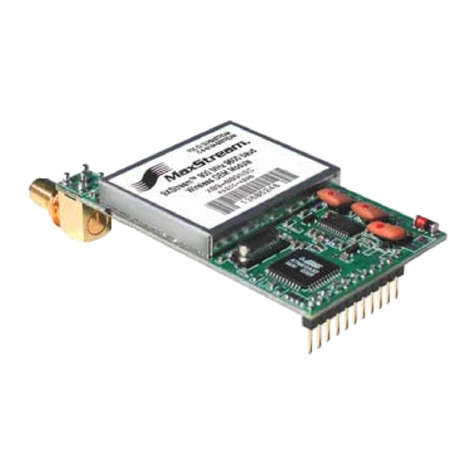
MaxStream
MaxStream XStream X09-001 Series product manual
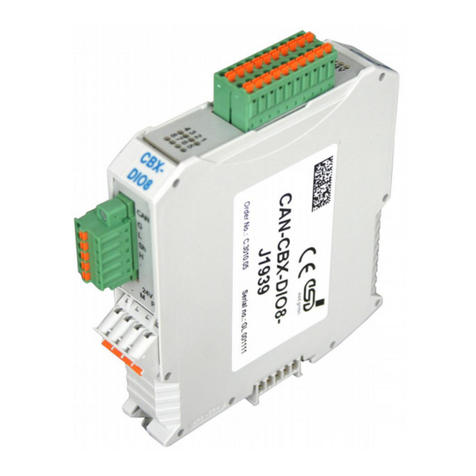
ESD
ESD CAN-CBX-DIO8-J1939 manual
